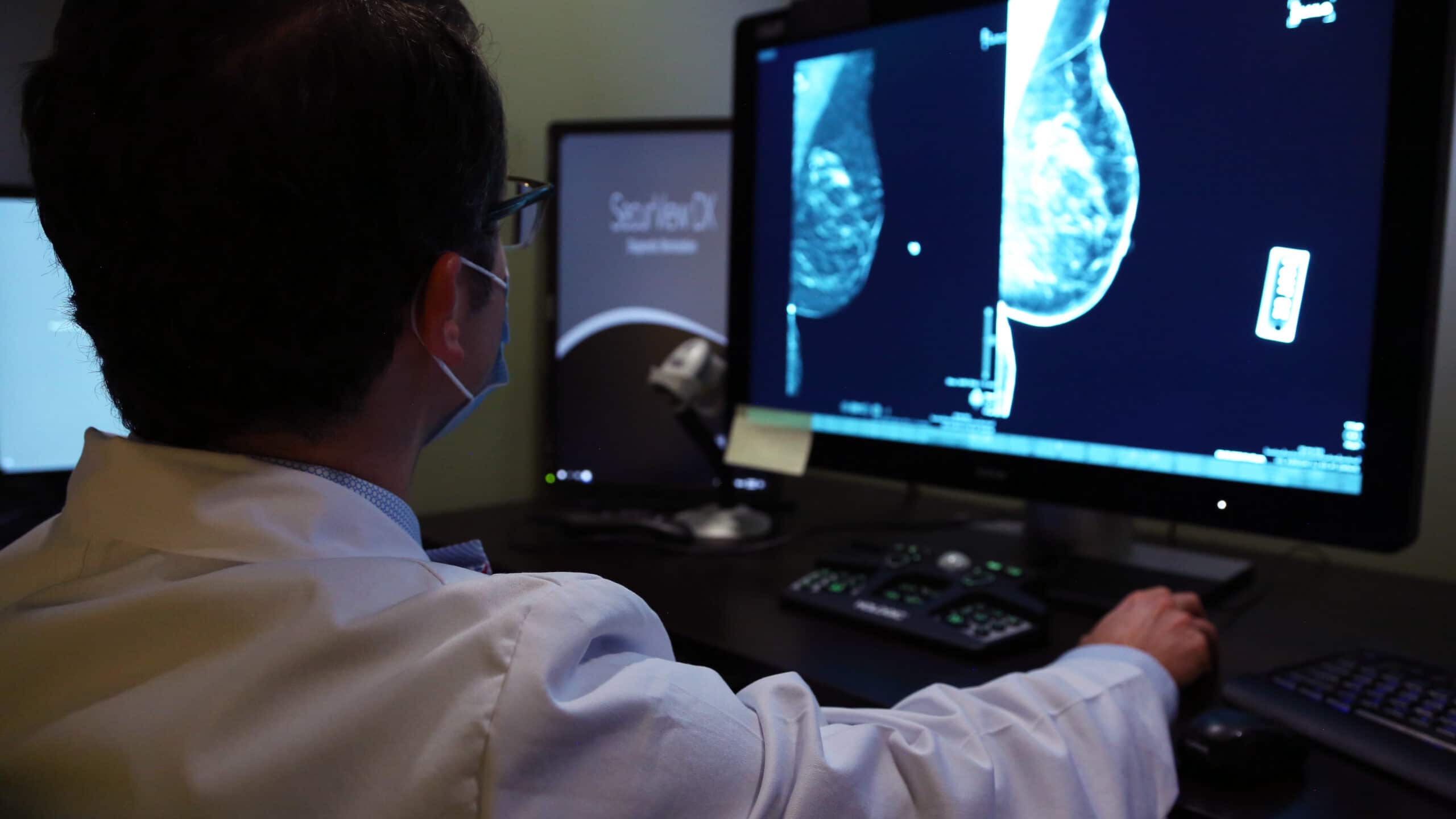
Second to lung cancer, breast cancer is one of the leading causes of death in women. According to the American Cancer Society, there is a one in 38 chance that a woman will die from breast cancer each year.
Breast cancer begins like any other cancer with cells beginning to grow out of control and create a mass or tumor.
How Do I Know That it Could be Breast Cancer?
Sometimes, breast cancer has outward signs that you can see or feel. These signs may include:
- A lump, an area of thickening or a dimple in the breast
- Breast swelling and redness
- An enlarged underarm lymph node
- Nipple pain, changes in the shape of the nipple or spontaneous nipple discharge
- Breast pain (although this is usually not the first sign of cancer)
It is important to note that there are benign (non-cancerous) breast tumors. However, if you see or feel any changes to your breast, contact your health care provider to schedule a mammogram or other diagnostic test.
What Are the Most Common Types of Breast Cancer?
While there are other types of breast cancer, the vast majority of breast cancers are:
- Invasive Ductal Carcinoma
- Ductal carcinoma in situ
- Invasive lobular carcinoma
Each type differs in how it presents itself, how treatable it is and how fast it can spread.
What Are the Risks of Developing Breast Cancer?
Some of the risk factors for breast cancer include:
- Getting older
- Family history of breast cancer
- Smoking
- Excessive weight, especially after menopause
- Heavy alcohol use
- First full-term pregnancy after 30
- Never giving birth
- Early start of menstruation
When Should I Get My First Mammogram?
The American College of Radiology and the National Comprehensive Cancer Network still recommend that women with average risk start screening mammography at age 40 and continue annually thereafter. However, your doctor may order a mammogram before age 40 if you are at higher risk for breast cancer or if you experience symptoms.
If you’re wondering what the mammogram experience is like, check out this blog post on, “What you should expect at my first mammogram.”
Men Can’t Get Breast Cancer … right?
While many breast cancer patients are women, men are not exempt from this disease. In fact, men have a small amount of breast tissue inside of their chest wall.
Breast cancers in men are often more aggressive and are often identified at later stages.
Most men do not need screening, but for those with a strong family history or a personal history of past treated breast cancer, screening should be considered.
UofL Health is here for all of your breast health needs. We have comprehensive services, such as 3D mammography options, breast ultrasounds and stereotactic biopsies. Mammography and other breast services are offered in seven convenient locations across Jefferson County, Shepherdsville and Shelbyville.
If you would like to schedule your breast cancer screening, please call 502-681-1405.









